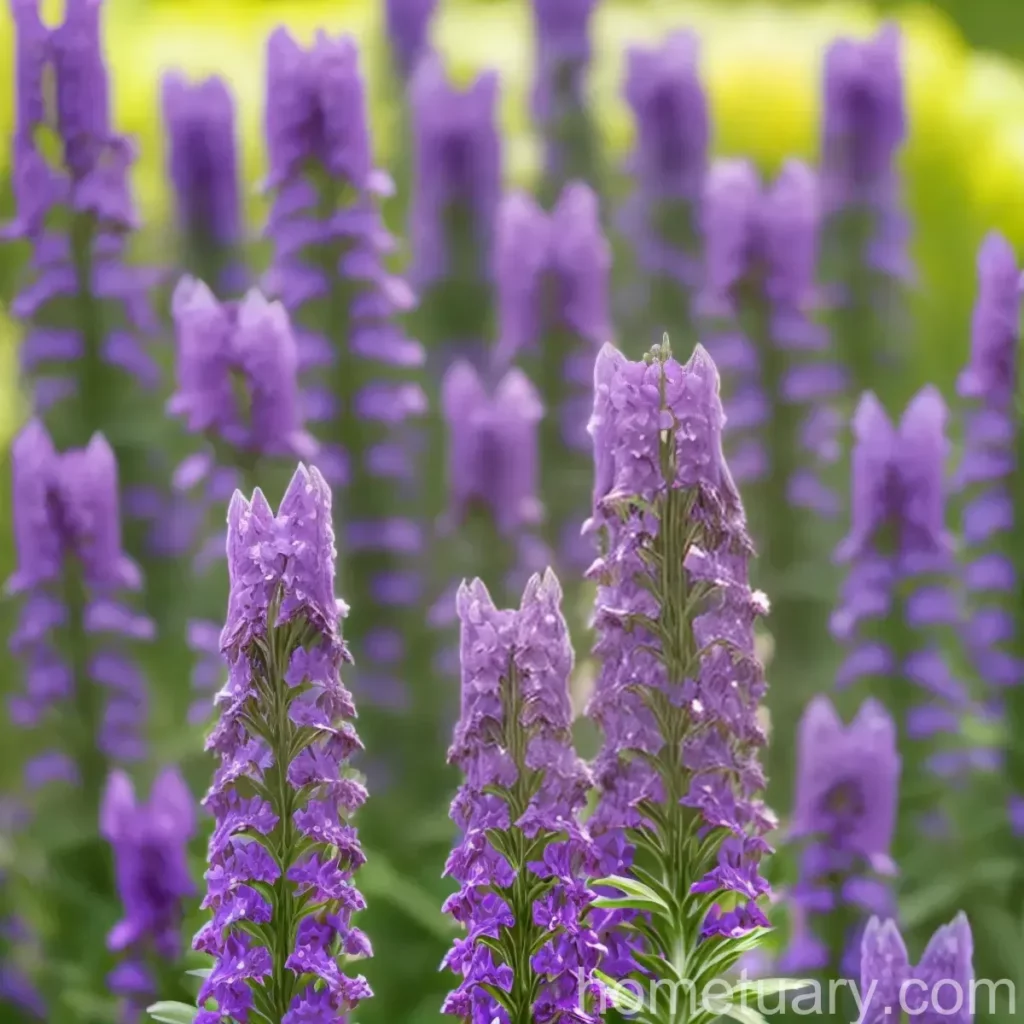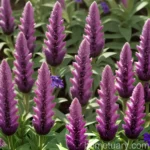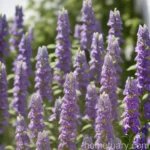All About Beardtongue (Penstemon ‘Dark Towers’)
Introduction
In the world of ornamental gardening, Penstemon ‘Dark Towers’, commonly known as beardtongue, is a popular choice for many gardeners. Its unique characteristics and charming flowers make it a valuable addition to any garden. In this blog post, we will delve into the fascinating world of beardtongue (Penstemon ‘Dark Towers’), exploring its culture, uses, care requirements, and much more.
What is Beardtongue (Penstemon ‘Dark Towers’)?
Penstemon ‘Dark Towers’ is a perennial plant that belongs to the Scrophulariaceae family. It is a hybrid cultivar, known for its striking appearance and ease of cultivation. The ‘Dark Towers’ variety is particularly prized for its attractive dark foliage and stunning tubular flowers, which bloom from late spring to early summer. The deep wine-colored foliage contrasts beautifully with the light pink to lavender flowers, creating a visually striking display in the garden.
Key Takeaways – Beardtongue (Penstemon ‘Dark Towers’)
Before we delve into the specific details of beardtongue care, let’s take a quick look at the key takeaways for Penstemon ‘Dark Towers’:
- Plant Name: Penstemon ‘Dark Towers’
- Common Name: Beardtongue
- Family: Scrophulariaceae
- Bloom Time: Late spring to early summer
- Foliage Color: Deep wine-colored
- Flower Color: Light pink to lavender
- Growth Habit: Upright, clump-forming
- Hardiness Zone: 3-8
- Water Needs: Moderate
- Sunlight Requirements: Full sun to partial shade
Now that we have a brief overview of the plant, let’s dive into the specifics of cultivating and caring for this beautiful variety.
Culture
Water
Beardtongue (Penstemon ‘Dark Towers’) prefers moderate moisture levels. It is important to ensure that the plant receives adequate water, especially during the initial establishment phase and during periods of drought. However, it is equally important to avoid overwatering, as excessive moisture can lead to root rot and other related issues.
Watering Tips:
– Provide regular, deep watering, especially during prolonged dry spells.
– Allow the soil to dry out slightly between watering sessions to prevent waterlogging.
Sunlight
In terms of sunlight requirements, Penstemon ‘Dark Towers’ thrives in full sun to partial shade. It is essential to provide the plant with at least six hours of direct sunlight each day to promote healthy growth and abundant flowering. In regions with hot and intense summers, providing some afternoon shade can benefit the plant and prevent stress from excessive heat.
Sunlight Tips:
– Plant in a location that receives ample sunlight, especially in the morning and early afternoon.
– In hotter climates, provide partial shade during the hottest part of the day to protect the plant from heat stress.
Fertilizer
When it comes to fertilization, beardtongue (Penstemon ‘Dark Towers’) generally does not require excessive feeding. A balanced, slow-release fertilizer applied in the spring as new growth emerges can provide the necessary nutrients for healthy development and prolific flowering. Additionally, organic amendments such as compost can be incorporated into the soil to improve overall soil fertility and structure.
Fertilization Tips:
– Apply a balanced, slow-release fertilizer in the spring.
– Consider incorporating organic matter such as compost into the soil during planting or as a top dressing.
Soil
Beardtongue (Penstemon ‘Dark Towers’) thrives in well-draining soils with a slightly acidic to neutral pH. It is essential to ensure that the soil is rich in organic matter and is able to facilitate good drainage to prevent waterlogging and root rot. In heavy clay soils, amending with organic matter such as compost, peat moss, or coconut coir can improve soil structure and aeration.
Soil Tips:
– Choose well-draining soil with a pH of 6.0 to 7.0 for optimal growth.
– Incorporate organic amendments to improve soil fertility and structure.
Pruning
Pruning beardtongue (Penstemon ‘Dark Towers’) is relatively straightforward and primarily focuses on removing spent flower stalks to encourage continuous blooming and prevent self-seeding. Additionally, pruning back the plant in late fall or early spring can help maintain a compact and tidy growth habit. It is important to use clean, sharp pruners to make precise cuts and avoid damaging the plant.
Pruning Tips:
– Deadhead spent flowers to promote prolonged blooming.
– Trim back the plant in late fall to maintain its shape and vigor.
Propagation
Beardtongue (Penstemon ‘Dark Towers’) can be propagated through various methods, including division, stem cuttings, and seed propagation. Each method has its own set of requirements and benefits, allowing gardeners to choose the most suitable option based on their preferences and resources.
Propagation Methods:
– Division: Divide mature clumps in early spring or fall, ensuring each division has sufficient roots and growing points.
– Stem Cuttings: Take 4-6 inch stem cuttings from the current season’s growth and root them in a well-draining potting mix.
– Seed Propagation: Collect seeds from mature seed pods and sow them in a prepared seedbed or containers for germination.
Container Popularity
Beardtongue (Penstemon ‘Dark Towers’) is well-suited for container cultivation, making it a versatile choice for gardeners with limited space or those looking to add a striking focal point to their outdoor living areas. When choosing a container for beardtongue, opt for a sizable, well-draining pot to accommodate the plant’s root system and provide ample space for growth.
Container Tips:
– Select a spacious, well-draining container for optimal growth.
– Ensure adequate drainage to prevent waterlogging in the container.
Common Diseases
While beardtongue (Penstemon ‘Dark Towers’) is generally resilient, it can be susceptible to certain diseases and issues that may affect its overall health and appearance. Understanding the common diseases and their symptoms can help gardeners take timely preventive measures to protect their plants.
Disease Diagnosis
Some of the common diseases that may affect Penstemon ‘Dark Towers’ include:
– Powdery Mildew: Identified by the presence of powdery white patches on the foliage, often caused by humid conditions and poor air circulation.
– Root Rot: Caused by overwatering and poorly draining soils, leading to wilted, discolored foliage and overall decline.
Diagnosis Tips:
– Regularly inspect the plant for any signs of disease or distress.
– Take prompt action if symptoms of diseases are observed.
Common Pests
In addition to diseases, beardtongue (Penstemon ‘Dark Towers’) may also face challenges from common garden pests that can affect its growth and vigor. Being vigilant and proactive in pest management can help maintain the plant’s health and minimize pest-related damage.
Pest Management
Some of the common pests that may target Penstemon ‘Dark Towers’ include:
– Aphids: Small, sap-sucking insects that can cause distorted growth and weaken the plant.
– Spider Mites: Tiny arachnids that can cause stippling and webbing on the foliage, impacting the plant’s overall health.
Pest Management Tips:
– Monitor the plant regularly for signs of pest infestations.
– Utilize natural predators or insecticidal soaps to control pest populations.
Botanist’s Tips
To enhance the success of cultivating and caring for beardtongue (Penstemon ‘Dark Towers’), here are some valuable tips from the perspective of a botanist:
- Mulch: Apply a layer of organic mulch around the base of the plant to conserve moisture, suppress weeds, and regulate soil temperature.
- Companion Planting: Pair beardtongue with complementary species such as lavender, salvia, or rudbeckia to create visually appealing combinations and support beneficial pollinators.
- Winter Protection: In regions with harsh winters, provide a layer of mulch or protective covering over the plant to shield it from freezing temperatures and frost heave.
Fun Facts
As we explore the enchanting world of beardtongue (Penstemon ‘Dark Towers’), here are some fun and intriguing facts about this captivating plant:
- The tubular flowers of Penstemon ‘Dark Towers’ are especially attractive to hummingbirds, making it a delightful addition to wildlife-friendly gardens.
- Beardtongue is named for the small, protruding staminode within the flower that resembles a hairy tongue, attracting various pollinators.
- This perennial beauty thrives in a wide range of climates and soil conditions, exhibiting impressive adaptability and resilience.
Links to External Resources
To augment your knowledge and understanding of beardtongue (Penstemon ‘Dark Towers’), here are some valuable resources that offer in-depth information and insight:
- Royal Horticultural Society – Penstemon ‘Dark Towers’
- University of Minnesota Extension – Growing Penstemons
- North Carolina State University Extension – Beardtongue in the Garden
Conclusion
In conclusion, beardtongue (Penstemon ‘Dark Towers’) is a captivating perennial plant with a wealth of charming qualities and simple requirements. By understanding its cultural needs, uses, and care guidelines, gardeners can cultivate this wonderful variety with confidence and delight in its captivating presence in their outdoor spaces. Whether in garden beds, containers, or mixed borders, the allure of Penstemon ‘Dark Towers’ as a low-maintenance, high-impact plant makes it a cherished addition to diverse landscapes and garden settings. With its versatility, resilience, and visual appeal, this splendid plant continues to enchant gardeners and nature enthusiasts alike, offering a delightful tapestry of color and texture in the great outdoors.















